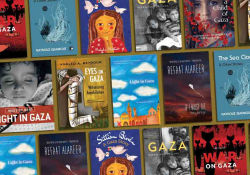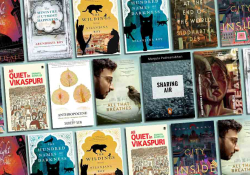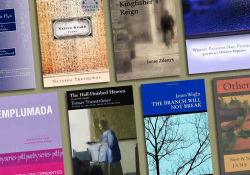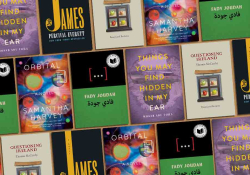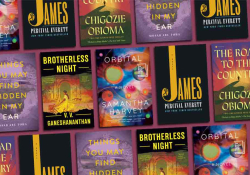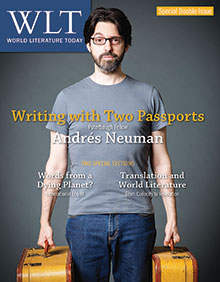Recent Eco-Cinema: A List of Ten Must-See Films
In exploring the ever-fluid realities of the contemporary environment, few mediums are as well suited as cinema. Through the recording and manipulation of images, sound, and temporal duration, the cinematic form presents a multisensory experience of the lived world that extends beyond verbal narrative, already so powerful in its own right. Engaging the colors, shapes, and rhythms of a river or a brownfield, the sound of a swallow or the silence of an irradiated village, filmmakers have access to unique representational strategies for exploring the past, present, and future of our physical environment. Viewers, in turn, access a rich opportunity to examine locales both close to home and around the globe, whether through documentary, fiction, or fantasy film.
In Landscape and Film, Martin Lefebvre writes that “one of the first wonders the cinema offered its viewers was that of the natural world in movement.” Our earliest examples of the moving image, such as Eadweard Muybridge’s Horse in Motion (1878) and Louis Le Prince’s Roundhay Garden Scene (1888) explore the mystery of the body and human relationship to the natural environment. In spite of over a century of innovation, these simple themes remain just as compelling today as they have ever been. They are further enriched, however, and further complicated, by contemporary realities such as climate change, chemical toxicity, and socioenvironmental disparity. Such challenging issues, and many more, have been widely explored in recent years by a vast array of inter- and transnational filmmakers. What follows are ten feature-length films representing just a brief sample of their work. This list attempts to span the globe in terms of the films’ location of origin as well as the environments with which they engage, but there is no doubt that it will include many a lacuna, as so much great work in the burgeoning realm of eco-cinema continues to emerge.
Waste Land (2010). Brazil/UK. Lucy Walker, dir., with Karen Harley & João Jardim.
This documentary follows artist Vik Muniz through Jardim Gramacho, a massive landfill outside of Rio de Janeiro. Focusing on his collaboration with a group of garbage pickers as they rehabilitate waste into art, Waste Land exposes both the gross excesses of contemporary consumerism and the great potential for creative response—we learn that almost anything can be repurposed.
Le quattro volte (2011). Italy. Michelangelo Frammartino, dir.
Meaning “the four moments” or “the four directions,” Frammartino’s Le quattro volte features one protagonist in four forms—charcoal, an old man, a young goat, and a tree. The film is a largely silent meditation on the connectivity between human, animal, and land and features the lush, rocky terrain of Calabria in southern Italy.
Beijing Besieged by Waste (2011). China. Wang Jiu-liang, dir.
Award-winning photographer Wang Jiu-liang travels to over five hundred of Beijing’s landfills in this documentary. Like the directors of Waste Land, Wang trains his lens on the garbage scavengers who find means of meager sustenance within mounds of detritus. He approaches his work as both artist and advocate, beautifully capturing the surreal face of a world covered in trash while warning of the ramifications of today’s material culture.
The King’s Necklace (2011). Gabon. Henri Joseph Koumba-Bididi, dir.
This dramatic feature weaves together three stories: a tribal queen seeks to recover from France a sacred family necklace, a young orphan refuses to part from the lion he was raised with in a circus, and an ecologist attempts to reintroduce lions to his native Gabon. As these plotlines merge against the backdrop of the Gabonese forest, Koumba-Bididi raises important questions about the repatriation of objects as well as beings.
Satellite Boy (2012). Australia. Catriona McKenzie, dir.
Set in northwestern Australia, Satellite Boy follows the adventures of a young boy named Pete as he makes sense of both his domestic environment and the vast terrain beyond. Through a fictional plot, the film explores the politics of contemporary mining as well as the ever-present mystery of the Outback.
The Bay (2012). US. Barry Levinson, dir.
While Levinson’s eco-horror film may seem to be an odd pairing with other titles on this list, it represents yet another model for imaginative work about the widespread ramifications of toxic pollution. Multiple subplots overlap in the film: contaminated water causes an infectious plague to spread through Maryland’s Chesapeake Bay while protagonists seek to save themselves from their own environment.
Japan in a Day (2012). UK / Japan. Philip Martin & Gaku Narita, dir.
A truly collective work, Japan in a Day features footage shot by over eight thousand filmmakers, carefully edited by directors Martin and Narita. All footage was shot on March 11, 2012, the one-year anniversary of the Tōhoku earthquake and tsunami that led to the Fukushima nuclear disaster. What emerges is the portrait of a nation seeking a redefined sense of identity and place.
Powerless (2013). India. Fahad Mustafa and Deepti Kakkar, dir.
In this nonfiction work, Mustafa and Kakkar expose the electricity wars of Kanpur, India. Featuring a Robin Hood electrician, who splices and reroutes lines for the underserved, and a power-company administrator who works to forge peace between divided public factions, Powerless is filmed against the backdrop of one of the world’s fastest-growing and most polluted cities.
Expedition to the End of the World (2013). Denmark / Sweden / Greenland. Daniel Dencik, dir.
This adventure film follows a group of artists and scientists on a journey to the once ice-blocked fjords of northeastern Greenland, now defrosted and accessible due to global warming. Amid breathtaking views and light comic mishaps among the crew, the film draws viewers into a seemingly untouched landscape while questioning how much longer such a place might be able to exist.
By the River (2013). Thailand. Nontawat Numbenchapol, dir.
Numbenchapol’s most recent film documents Lower Klity, a village in western Thailand, as it confronts the legacy of a leaking lead mine. While the leak was discovered fifteen years prior, and many of the riverfront vistas featured in the film are lush, By the River deftly employs image and text to expose the long-term ramifications of toxic waste seepage for people and place.
University of Oklahoma
